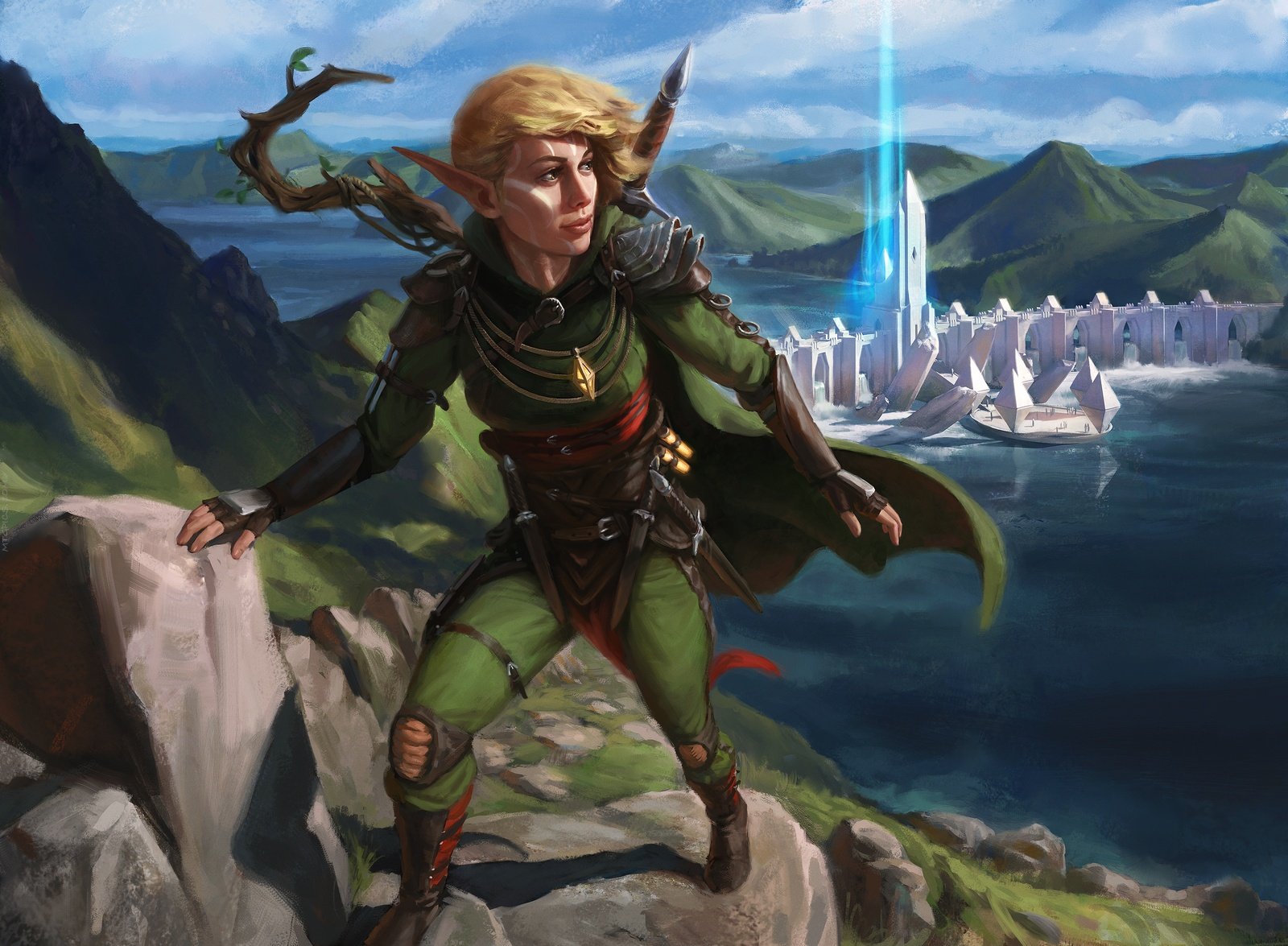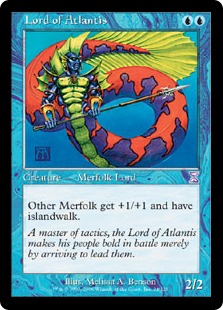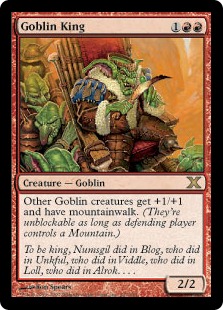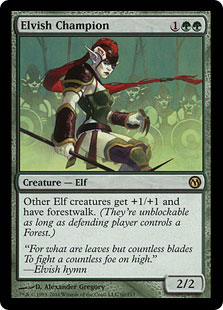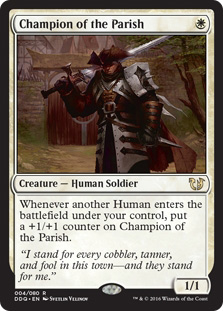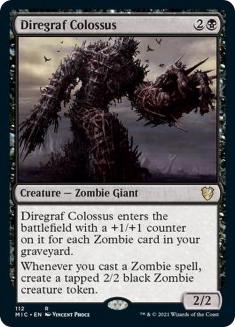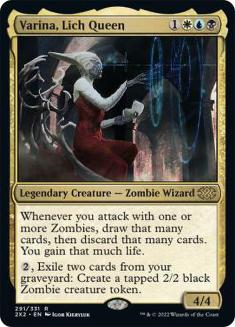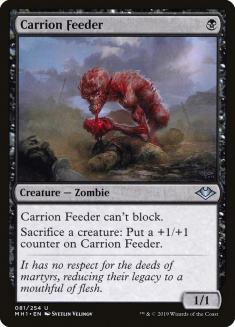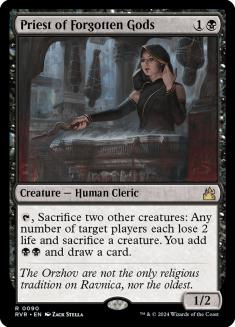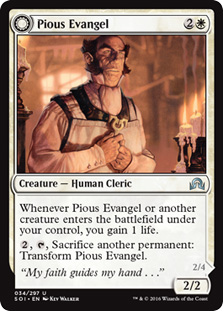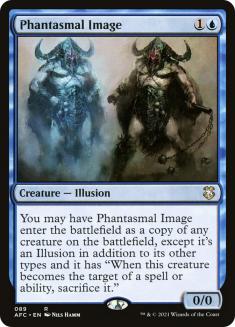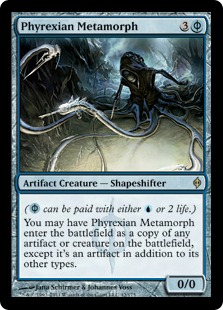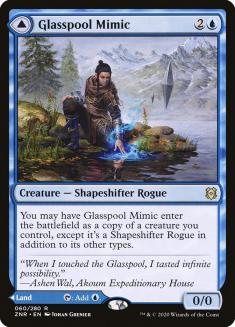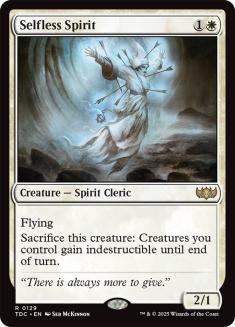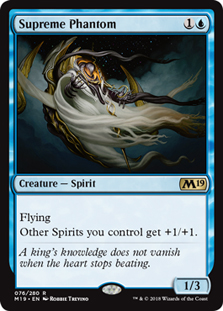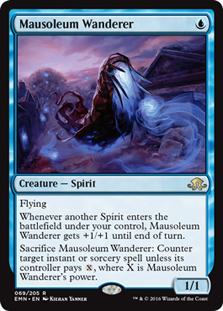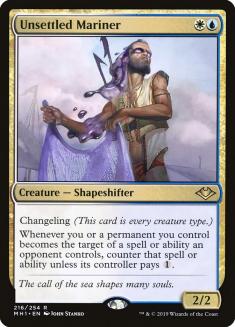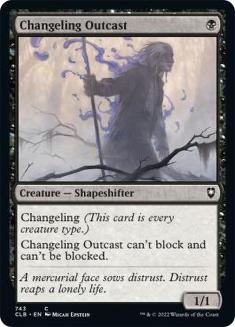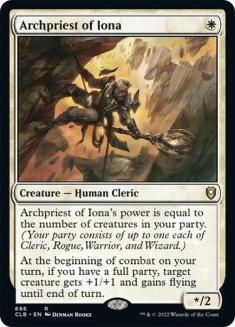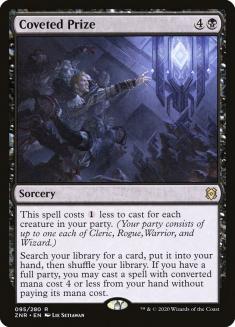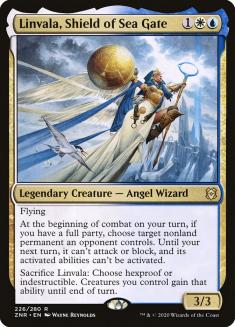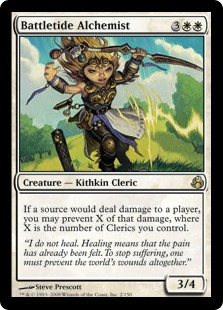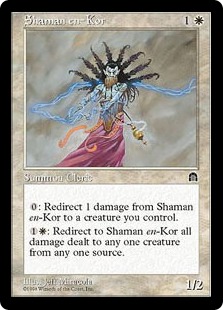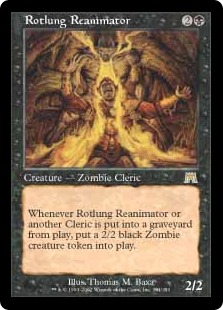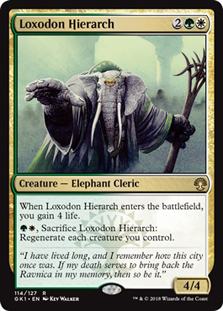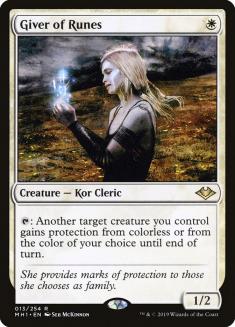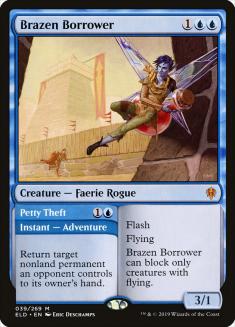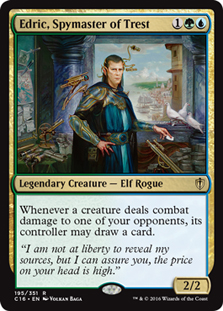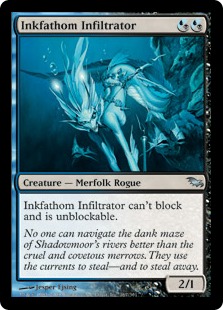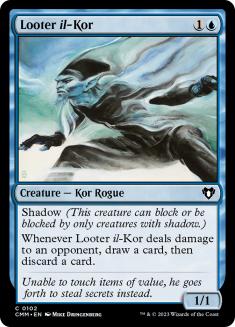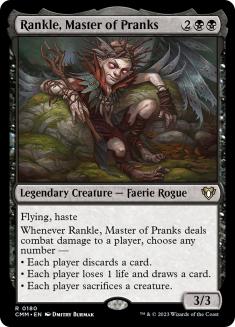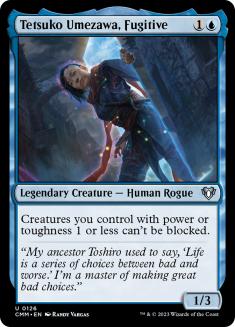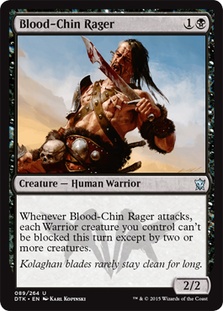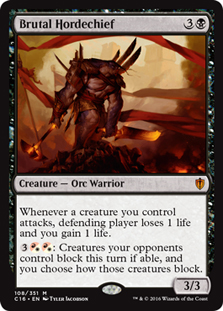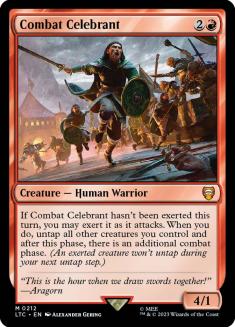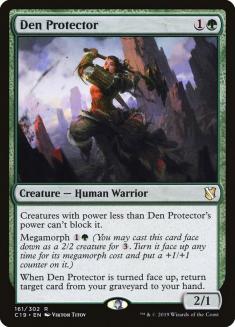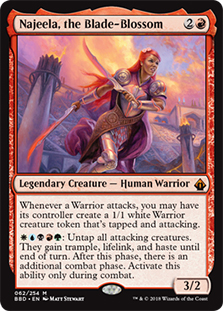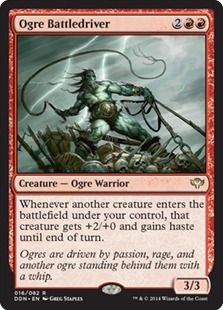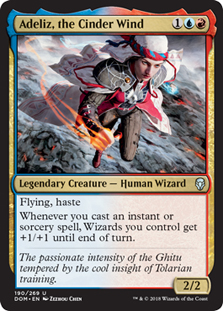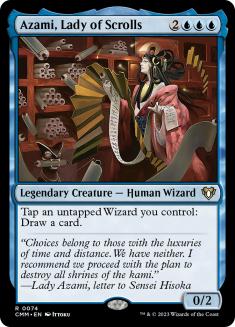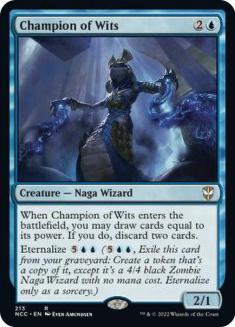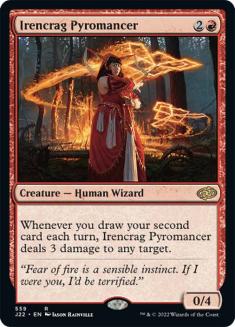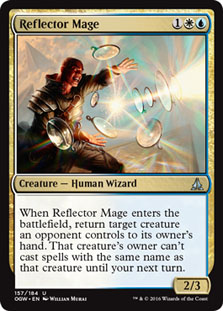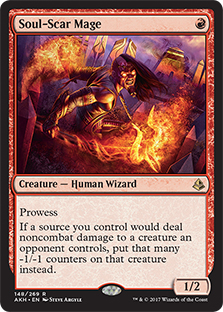During coverage of last weekend’s SCG Tour Online Championship Qualifier Todd Anderson and I found ourselves filling a lot of dead air while players went deep into garbage time with their Omnath, Locus of Creation monstrosities. Many tangents and non sequiturs were spoken, including a claim from yours truly that party is the most immediately fun and resonant Magic mechanic that has been printed since I started playing Magic. I also expressed in my Zendikar Rising review piece earlier this week that I’ve already become interested in designing a Party Cube. Today I want to break down effective ways to implement tribal themes in Cube and explain why I think party is such a home run.
What’s So Great About Tribal?
There are good and bad ways to implement tribal in Cube, but independent of execution they’re valuable themes to explore. Tribal decks and products have been fan favorites for a long time. They’re pretty easy to understand on a fundamental level and they offer players something to root for, not unlike a sports team. I can’t remember the last time I actually saw a Merfolk deck, but I also can’t deny that Merfolk fans exist in overwhelming numbers. Humans in Modern is something of an inescapable topic during preview season. Tribal Magic is plainly popular.
In addition to being well-liked and easy to understand, tribal mechanics can also loudly serve as rails for a Cube designer. When a card explicitly names a creature type and an associated benefit, that tells a player to care about that creature type. When you see a Champion of the Parish in a pack, you get a pretty good idea of what’s going on. That said, good Cubes aren’t just a bunch of decks shuffled together with the intention of reassembling them while drafting. You want to make sure that you’re building an environment that offers players multiple rewarding decisions, so there’s a fine line to walk with tribal.
The Trouble with Tribal
I mentioned Merfolk earlier as an example of a popular tribe, though it is a notably limiting one in terms of Cube design. A lot of the best Merfolk really only play with other Merfolk, care only about attacking and blocking, and have prohibitive mana costs. It’s a really big ask for a Cube to support more than one style of deck that can happily cast Lord of Atlantis.
Goblins are a tribe that I’ve seen attempted a number of times, and they tend to have some similar problems to Merfolk with regard to castability, and they can have a much more pronounced problem with regard to flexibility. Some of the most iconic Goblins are Goblin Ringleader and the newly printed Muxus, Goblin Grandee, and they realistically force you to take every Goblin you’re passed while caring about little else.
Using creature types to inform decisions gives players some helpful direction, but tribal cards that care about maxing out on a tribe rigidly pigeonhole players in a way that diminishes the draft experience. The successful case is that a player does what they’re told and drafts all the Goblins cards. The fail cases are a jumbled deck where some cards synergize and some cards don’t, or, more commonly in my experience, the tribal cards just go last in the draft.
Tribal decks also find themselves fighting uphill if you try to implement them in environments where some of the other archetypes are made up of largely generically powerful cards. Nobody is going to want to draft Elves if somebody at the table is reanimating Elesh Norn, Grand Cenobite on Turn 3.
Humans, Zombies, and The Spooky Cube
Now let’s take a look at what I consider to be a successful implementation of tribal themes in a Cube that I’m very proud of. Here’s a link to my Spooky Cube, which has a strong Innistradian vibe and features Humans and Zombies as supported tribes.
The Spooky Cube differs from more traditional Cube environments in a lot of ways, and someday I hope to do a more thorough breakdown of it, but for now let’s focus on the white and black columns which feature heavy support for Humans and Zombies, respectively.
The first thing to take note of is that there aren’t that many cards that explicitly care about Humans or Zombies. A few cards get much better if you lean in on one of these tribes, but most of the ways that I’ve chosen to support these tribal decks are more subtle.
Volume
Despite there being only a few cards that reference Humans, many creatures are incidentally Human. The idea isn’t to tell players that they need to draft every Human that goes by, but rather to maximize the potential of Thalia’s Lieutenant and the like when they show up. Humans are spread pretty widely across all five colors, with Zombies seeing healthy representation in their supported colors of black, blue, and white.
A really important element of this manner of support is that one-mana creatures in the Cube are overwhelmingly Humans or Zombies. Many of these cards can and will end up in decks that don’t care about their creature types, but by making most of the cheap creatures one of these types you maximize the potential that players will be able to take advantage of the actual tribal cards.
Another spot where this comes up is with regard to the sacrifice theme that’s supported in the Cube. Viscera Seer is conspicuously absent, because we don’t care about Vampires here. Every creature that serves as a sacrifice outlet is either a Human or a Zombie.
These cards are powerful enough that they show up in decks that don’t care about their creature types, but the sacrifice decks more commonly take advantage of Xathrid Necromancer and Gravecrawler with these rails in place. Sometimes players will draft an early Cryptbreaker and focus on drafting a Zombies deck, but the really cool moments come when somebody gets passed an Undead Augur and realizes that their sacrifice deck has been a Zombie deck the whole time. This ability to backdoor into decks with tribal synergies also greatly reduces the number of drafts where all of the tribal cards just go last.
I’ve also been really happy with clones as a sort of pseudo-support for tribal decks. Both Humans and Zombies have reasons to go into blue, and Phantasmal Image and the like do a great job of allowing players to maximize tribal synergies. Personally I also just think these cards are generally excellent for Cube play, so this is just another great example of subtle and easy ways to support tribal decks.
Spirits were another thing that I tried in the Spooky Cube, but they were something of a spectacular failure. There are a handful of cool Spirits that have been printed over the last several years, but the problem that I had with them was that somebody would just take Selfless Spirit for whatever deck they were playing while all of the Spirit lords landed in sideboards. Spirits don’t lend themselves as naturally to supporting clearly defined non-tribal archetypes, and their absence is one of the points where the Spooky Cube diverges from the plane of Innistrad in the interest of more dynamic gameplay.
Changelings
I do want to be clear that the failure of Spirits in the Spooky Cube had nothing to do with trying to feature too many tribes. As a matter of fact, cards that work in multiple tribal decks serve as very cool pivot points for drafting or as ways to hybridize strategies. I actually think that supporting multiple tribes offers some really cool interactions and decisions, and “changeling tribal” as a draft archetype in Modern Horizons was a great example of this.
I see a handful of changelings as awesome cards for Cube, with Unsettled Mariner being the changeling headliner in the Spooky Cube. Its effect offers relevant protection and just being an Azorius creature that counts as a Zombie or a Human has a ton of value. Nameless Inversion also makes the cut, but that generally has more to do with enabling delirium. Synergizing with Diregraf Colossus is pretty cool though.
Changeling Outcast is very close to making the cut for Spooky Cube, but I excluded it largely because it only cares about attacking. There’s a ton of other stuff that I’m trying to support here, but generally speaking Changeling Outcast stands out as one of my favorite recent designs and one that I strongly endorse for Cubes that support multiple tribes. Mirror Entity and Taurean Mauler are also pretty solid standouts from the changeling crowd, but I don’t adore them the way I do the Outcast. Recall that one-mana creatures with the appropriate creature type are of paramount importance.
Notably, party gets a couple of bonus “changeling” cards from Zendikar Rising in the form of creatures that count as all four party types. Tajuru Paragon in particular is just a fantastic design.
Party Time
And that brings us back to party. I’ve been drafting a good amount of Zendikar Rising, which is quite rare for me these days. I love the draft lanes enabled by party. Managing if you want to go heavy on a specific type or to try to spread things evenly offers a ton of interesting decisions in both drafting and playing the set. It hits all the right notes regarding tribal in Cube and naturally lends itself to a combat-centric environment, which I also see as a huge plus given how many Cubes are centered around mana acceleration and combo.
Only a handful of cards in Zendikar Rising reference party, but as I discussed with regard to the tribal decks in the Spooky Cube, that’s totally fine. This allows for more flexible draft lanes, and much like Zendikar Rising draft, a Party Cube would ideally offer avenues to lean in heavily on Clerics, Rogues, Warriors, and Wizards as standalone tribes.
The Party Cube is still an idea largely in its infancy, but I’ve started in on the process that I outlined in my article on starting a Cube design. My vision is to have party serve as an aesthetic shell for a Cube with a technical vision of being heavily combat-centric. I’m familiar with a handful of “Combat Cubes” that offer really crunchy gameplay around navigating combat, and I believe that party serves up a light and fun skin for such environments. Much like the Spooky Cube is a whimsical name for a graveyard-centric environment, my idea is that Party Cube would be a clean, aesthetically satisfying packaging for a combat-centric environment.
During Zendikar Rising preview season we got a little information on the upcoming Magic releases set for 2021, and it looks like we’ll be getting more support for the party tribes coming down the pipeline. It would be very odd to not see any Wizards in Strixhaven: School of Mages, anyway. As such, I’m holding off on finalizing a Party Cube list, but I’ve spent some time poring over existing party creatures and have some ideas for each of the four tribes.
Clerics
I was surprised to discover that there were as many cool Clerics in the history of Magic as there were. I knew it was a supported tribe in Onslaught, but I was also aware that Rotlung Reanimator was going to be one of very few hits from that set.
Myriad Clerics do a great job of shielding your creatures from damage and removal spells, and I’m imagining very robust Cleric tribal decks as well as a few odd Clerics providing powerful cover for full parties.
One of my favorite things about Cube design is highlighting cards that don’t otherwise see much of any play, especially if they did see significant play once upon a time. I’m incredibly excited to craft an environment where Shaman en-Kor can give players headaches again.
Rogues
I have a strong distaste for the mill theme of Rogues in Zendikar Rising and for mill in Cube in general. Mill cards just really don’t play well with other cards and it often doesn’t feel like you and your opponent are playing the same game when mill is involved. You also get into situations where players want to sideboard in a bunch of basic lands and it’s honestly just a ton of downside for very little upside.
Luckily, there are plenty of cool Rogues that have nothing to do with mill. It’s pretty easy to envision Rogues as the tempo tribe with a strong emphasis on making it difficult for your opponent to block.
Edric, Spymaster of Trest is the big standout for me here, as it’s an awesome card in a deck with a lot of difficult-to-block creatures that you’d be happy to play in Rogue tribal or just as a strong party member. Good creatures that play well with other creatures of the same type that don’t explicitly care about those creature types are exactly what I’m looking for.
Warriors
Warriors are mostly good for giving beatdowns. There are no big surprises there, and creatures that give beatdowns are incredibly welcome in a Combat Cube. Most of them aren’t flashy, but many of them are obviously good, and that counts for something.
Najeela, the Blade-Blossom is a card that I’ve never cast, but that I’ve always been a fan of. It has the potential to be an all-star in a Warrior-heavy deck, or in any deck that can generate all five colors of mana. As it’s from Battlebond, I imagine that most competitive players have never heard of the card, and offering the experience where a player reads a card for the first time and then is immediately convinced of its power on the battlefield is also one that I value highly.
Wizards
Last but certainly not least, we have my beloved Wizards. Soul-Scar Mage needs no introduction, and Champion of Wits is a Cube favorite of mine. Reflector Mage is more obnoxious than anything, but alas, that is the way of the Wizard.
I love Adeliz, the Cinder Wind, though I imagine that Wizards are going to generate the most balance issues given that they tend to reference noncreature spells. It will be important to feature a good amount of removal so that games aren’t just about curving out, but I’ll also want to take care to ensure that creatures are the best-supported card type.
Some of it is just based on the history of the game and some of it comes down to my personal biases, but whatever the cause is I often find myself needing to tone down the Izzet decks after the initial draft of my Cubes. I’m sure I’ll find a way to make Wizards and spells decks too good, but I’m also confident that there’s a way to make them appropriately powerful.
Party On, Garth
While party isn’t exactly a subtle mechanic, I believe that it can be implemented in Cube in a way that offers players dynamic pick orders and flexible draft lanes. I look forward to sharing the finished product of my Party Cube when I get everything sorted out, and I hope that the insights I offered today are valuable in the way of implementing tribal archetypes in your own Cubes.

